
Western Anatolia Ancient Route with New Ford Ranger (1)
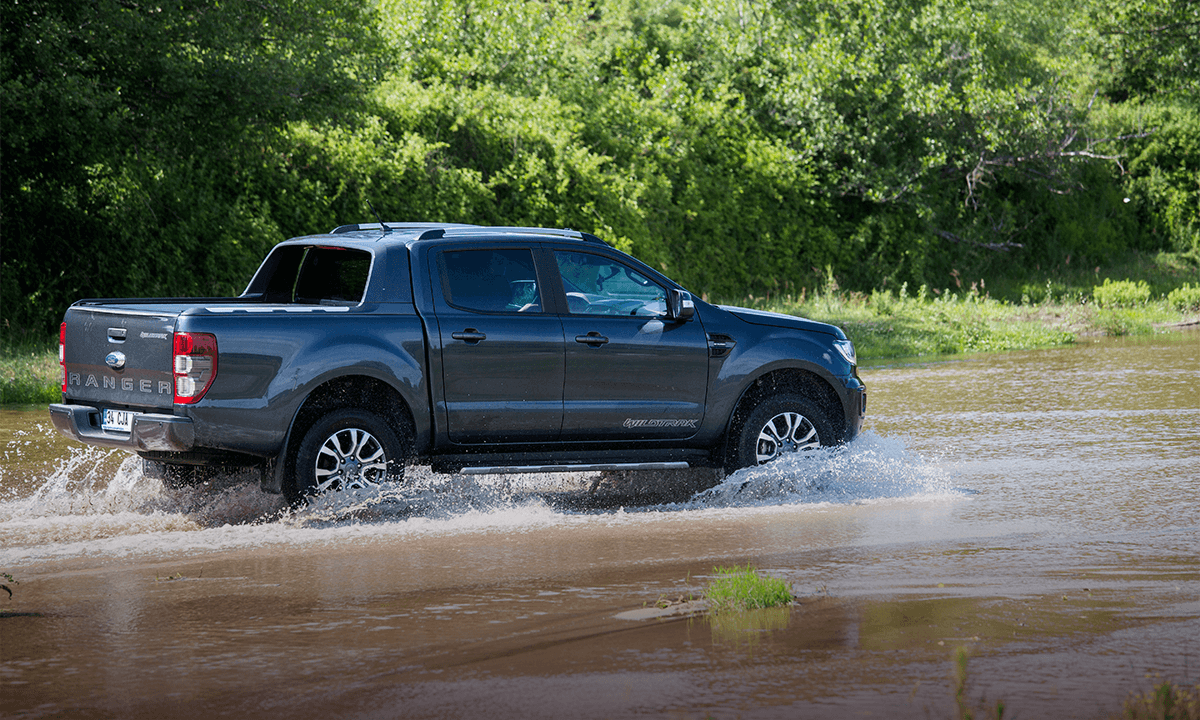
Journalist Koray Muratoğlu and photographer Engin Irız with the new Ford Ranger Wildtrak, set off to explore the rich nature of Western Anatolia, its landscapes where green and blue meet, and of course the history of this geography that has hosted civilizations... We hope you to read with joy the first part of our "Western Anatolia Ancient Routes" series, in which Koray Muratoğlu and Engin Irız describe their 6-day journey from Çanakkale to Kemer, and stay tuned for the following parts!
Article: Koray Muratoğlu
Photographs: Engin Irız
This story you have started to read is a journey story of approximately 1200 km and unique to Anatolia. It takes place in one of the richest "civilization" geographies seen in history, stretching from the North Aegean to the Western Mediterranean skies...
Does anyone remember that there was a TV series called "Taşların Sırrı"?.. You must be at a certain age group to remember though. It was a 1992 production, an archeology-themed drama starring Tarık Akan and Ayşegül Aldinç. In my opinion, it was one of the best series of the period with an exciting, good script and with the subject of historical artifact smuggling. It had a much more intellectual level than the average of the present ones. It was this series dazzled the eyes of many young people in middle and high school years such as me with the bright golden lights of the archaeology. As I said, I was among them and I had made my final decision: I was going to be an archaeologist. Perhaps this was one of the first manifestations of that old spirit within me that fancies and could not break away from the old. Anyway, the fears of my family and those close to us did not realize and their challenging dissuasion operation became successful. Things such as that archaeology were of course an exceptionally good thing, but it was not the right choice for the future, archaeology was definitely a very enjoyable and entertaining immersion, but it was difficult to perform in our country, etc... And it did not take me long to realize that these statements were "unfortunately" correct. Actually, this is the most "pathetic" part of the story, that in Turkey which has Anatolia, in the lands of that could be called as the "cradle of civilization", tending towards archaeology being a mistake is accepted a general acceptance and real. As a result, I did not become an archaeologist, but a journalist; it is another ironic situation, anyway, let us not go into those issues.

So, why do we talk about it now? Because we did an archeology-themed "Road Trip" with the new Ford Ranger Wildtrak in Anatolia, which has hosted many important civilizations throughout the ages... We named it the "Western Anatolia Ancient Route". The purpose of this themed travel plan and route is, of course, not to experience heavy archaeological experience or enlightenment. It was both to create a beautiful route and to characterize it with such a special theme. In fact, to draw attention to these treasures, which we should know more about their importance. We chose many parts of the route you will read among places you would not plan to pass under normal conditions. Our main goal was to see new places and discover new routes. And believe me, as a humble "Road Trip" fanatic, I turned the wheels for the first time on 70-75% of the roads I traveled on this trip... We have connected the 10 important ancient cities in the Aegean and the Mediterranean. However, as I said, we tried to do this by using alternative routes as much as possible.
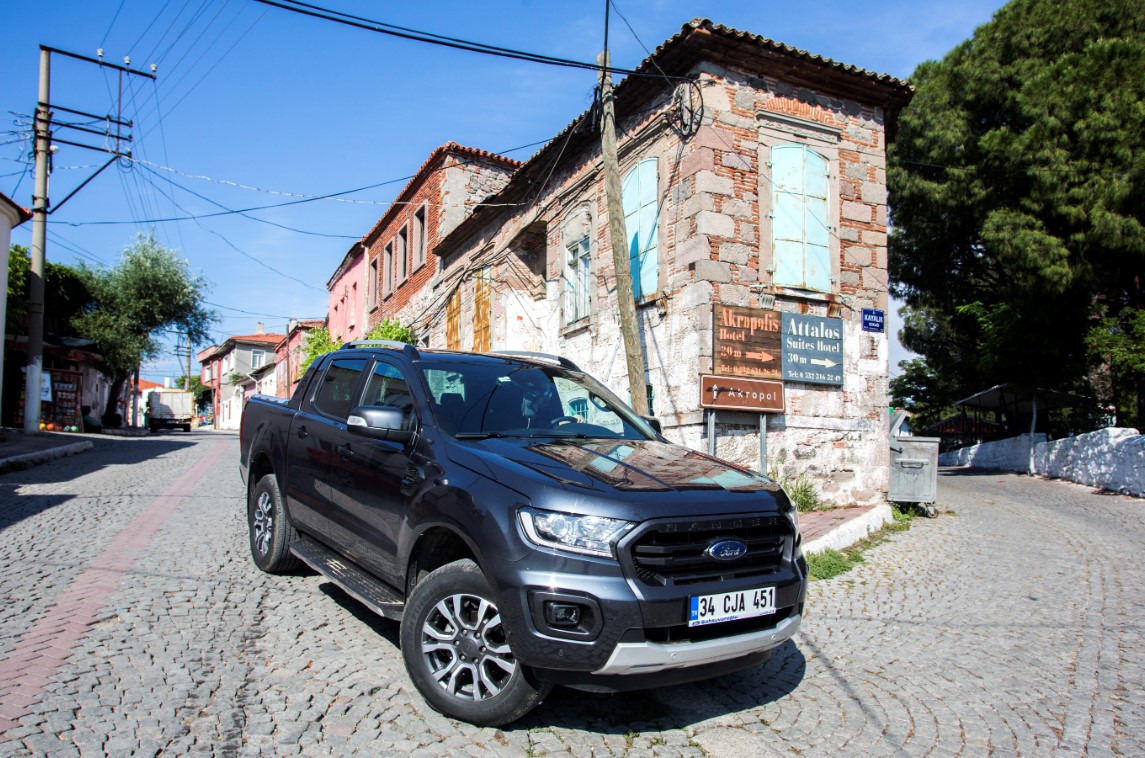
I can describe the main route as follows; we started from Çanakkale Troy and then the destination was Assos, another nearby archaeological site. From there, our destination was Bergama through Kozak Plateau and the two important ancient cities of the region, Pergamon and its Asclepeion. Then we headed to legendary Ephesus. Our next destination after Ephesus was Aphrodisias of Aydın, which does not actually get the attention it deserved. Right after, we stopped by Denizli and Hierapolis. Our next stop was Sagalassos, the ancient city within the borders of Burdur and, in my opinion, not known enough. Finally, we ended our route with Perga and Phaselis by reaching out to Antalya and stepping into the Mediterranean. Then let us start telling the story of this adventure with the companionship of the new Ford Ranger Wildtrak...
Day 1: Çanakkale - Behramkale - Bergama / Troy - Assos Ancient Cities
Distance: 270 km
Troy (Truva)
Troy, near the borders of Tevfikiye village and 25 km from Çanakkale, is one of the world's famous ancient cities. The importance of Troy lies in the fact that being place of the Iliad and the Odyssey epics of Homer. These epics are the first written literature of the west. During the excavations in Troy, 9 cultural layers were found. Its early period goes back to 3000 BC. From those times, there is nothing more than some foundations and ceramic remains. The most striking finds belonging to Troy II, dated back to 2500-2300 BC, are the foundations of house samples called Megaron and the group of findings that Schliemann called as the Priam's treasure, which is now displayed in the Pushkin Museum in Russia. Troy VI-VII periods, dating back to 1700-1000 BC, are generally identified with Homer's Troy. Its stone walls which made it today attract attention with the construction style known as saw tooth. Places such as baths, Odeon, theater and bouleuterion are the remaining parts of the Troy VIII and IX layers, covering the Hellenistic and Roman periods. The archaeological findings of Troy, with its legends being the subject of the ancient age's most known epic, are among the important values of the world cultural heritage. Its strategic location, which allowed a rich civilization to flourish, but also caused it to be subject of many attacks, can be regarded as both the luck and the misfortune of Troy. Located in the strait separating the continents of Europe and Asia, the historical ruins of Troy and its findings which are groundbreaking in the world of archaeology are the legacy of the city's brilliant history that began in 3000 BC. It is believed that the Trojan War, which made the name of the ancient city known to the whole world and caused many films and TV series to be shot, took place here; and the story of this war in Homer's famous epic Iliad increases the attraction of Troy even more. Troy is one of the ancient cities with the richest archaeological findings in Anatolia. These riches have brought it to be at the UNESCO World Heritage List since 1998. Source: Ministry of Culture and Tourism, General Directorate of Promotion, Introductory Publications
The starting point of our Western Anatolia Ancient Route is Troy. It is possible to reach Troy after a 30 km journey from Çanakkale city center. In terms of survival and architectural size, Troy is an archaeological site that stands behind the other cities that we are going to visit. But of course, things change when it comes to historical depth. It is useful to listen to Homer... In addition, the newly opened Troy Museum overcomes the deficiency in this respect. It is ideal to start the adventure by visiting the Troy Museum, which was built with very modern and good architecture. If we consider it as a sumptuous dinner, Troy can be described as a deliciously appetizing start. In short, it triggers your curiosity wonderfully.

After leaving here, in a noticeably short distance, we reach Çanakkale - İzmir road and reach Ezine after 25 km in total. We travel through relatively main roads up to this point.
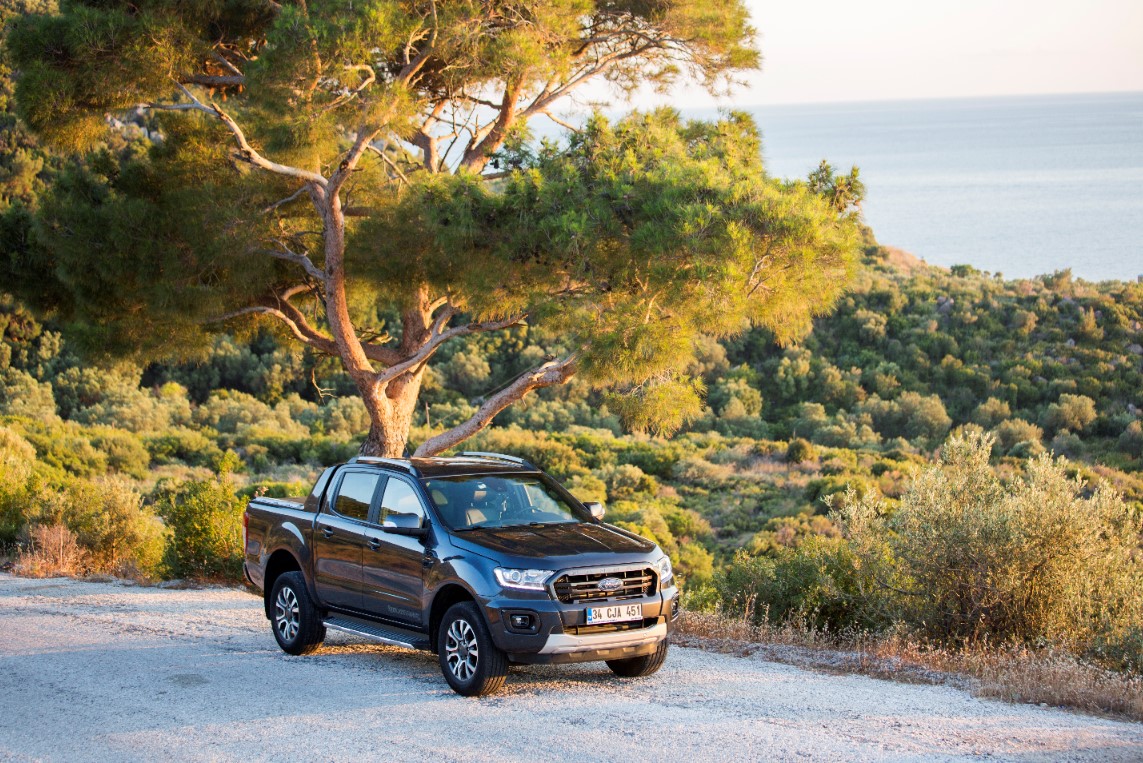
From Çanakkale to the beach, Küçükkuyu, I find this road very enjoyable. Both the environment and the driving joy of the road is quite good. After Ezine, I turn right and steer towards the sea. My first stop will be Babakale. There are several alternative routes to get here, and their length is about the same. However, I aim to reach Kösedere via the road closest to the coastline and reach Babakale from there.
It is the first week of June and a wonderful light in the North Aegean accompanies us. Of course, I cannot underestimate those who appeal to my eyes among the beauties offered by nature still in the spring spirit and the beauties of the vegetation; but the scents that appeal to my nose feel more precious for reasons I don't know. When I reach the shore and meet the Aegean again, I enjoy the view and drive using the unique torque of the Ranger in the lower cycles with small touches on the pedal. Asphalt quality is fairly good so far. After Ezine, you can drive on a particularly good asphalt and a nearly wide road for a while.
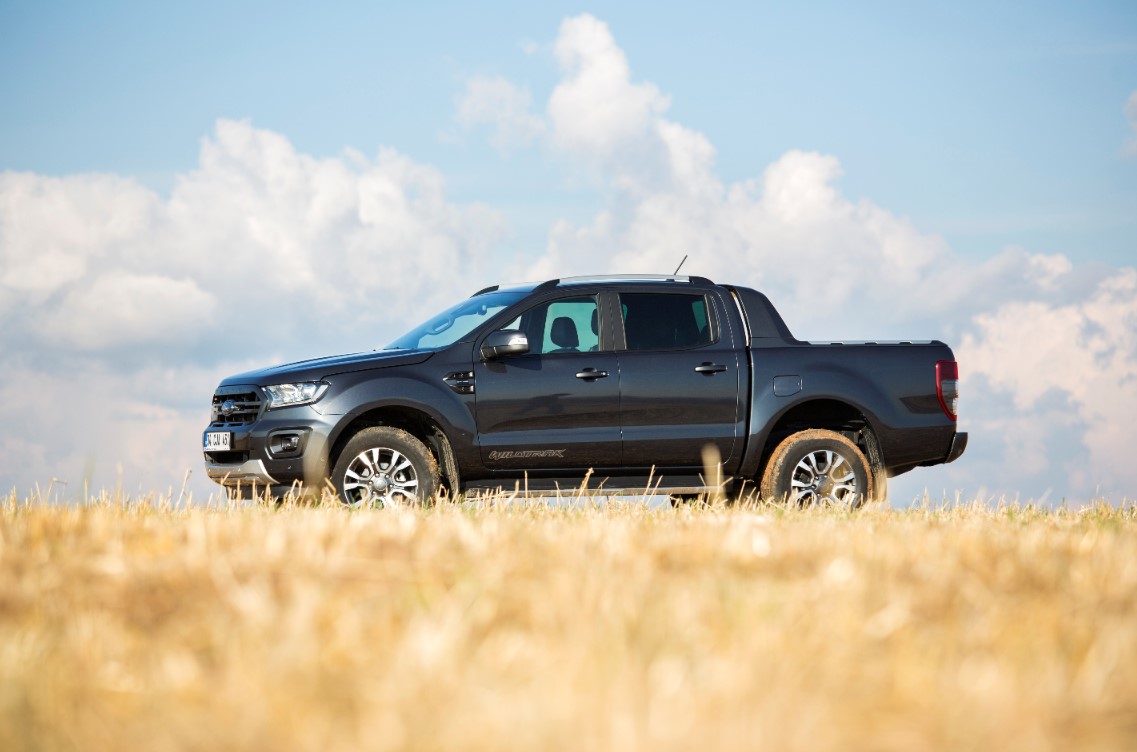
Then you continue with a road character that narrows but does not disturb your comfort and can be considered a little more alternative. The road is extremely good in terms of both driving pleasure and road quality. Babakale is the westernmost tip of our country's Asian territories. From here, you can even get a certificate from the local governor for "reaching the westernmost tip of Asia". Babakale is an extremely cute and simple North Aegean fishing town as it should be. There are available but limited accommodation, eating, and drinking, etc. facilities. The facility we used to see in that south does not exist here. Likewise, I can say that I am personally pleased with this situation...
After spending some time in the harbor and going to the historical castle and watching the view, we start the engine again. Our destination is Behramkale. I will drive for about 30 km. However, I must go about 8-10 km on the dirt road to get on the road to Assos. The dirt road is not challenging at all, I rode this sector by setting Ranger in four-wheel-drive mode and having some fun. I ride until Behramkale a patched but not bumpy road although cannot be called a great asphalt. The geography is beautiful as you can imagine, the chunky but clear view of the olive trees turns the environment into a wonderful photograph. Thanks to the road that goes up and down, the view of the environment is at the highest level. We arrive at Assos ancient city, it is quite calm. We even want to take a short break for a drink, but almost all businesses are closed. And the only open one smothers the instant light in our eyes by saying "Brother, I have just brewed the tea..." Anyway, we do with the coffee in the thermos from the morning.

Assos is a known small place, after visiting the city, we watch the magnificent view of Edremit Bay from the dominant hill. After we breathe in the smell of the sea blown by the wind, it is time to hit the road again. We will move towards the track of the day that I have been waiting with excitement. But first, we must pass perhaps the most boring stage of the whole route. We have 65 km of the road until Edremit.
Assos
Behramkale is a registered Ottoman village. Assos Ancient City lays within the borders of this village. The ancient city of Assos is located on a volcano cone. There is an acropolis (upper city) and other structures on the terraces descending to the south. Assos is surrounded by approximately 4 km of walls. There are necropolises in front of the east and west gates, which are the two main gates of the city. The temple located at the topmost point and dedicated to the goddess Athena, is dated to 525 BC. Agora is on the terrace of the southern slopes. The north stoa has two floors and the south stoa has four. The partially restored theater seats 5,000 people. It was used in Greek and Roman ages. Assos ancient port is a popular holiday destination today. Archaeological findings belonging to the city are exhibited in Boston Fine Arts Museum, Louvre Museum, Istanbul Archaeology Museum and Çanakkale Archaeology Museum. Source: (ÖZDEM, Filiz (ed.), Love, Wars, Heroes and Çanakkale; Veysel Tolun, The Ottoman Gate to the Mediterranean, Çanakkale, Yapı Kredi Publications
I continue from the coast until I get to the Çanakkale - İzmir road. There are many camping sites in this region, but none of them had opened yet in that period. After connecting to the main road, I continue the boring road that I mentioned, with lots of traffic lights and almost like urban driving, until Edremit. After passing Edremit and taking a turn towards Burhaniye, it gets a bit of relief. We have now turned our direction towards İzmir.
Our goal is Bergama and I will end the day there. Chances are you have traveled down this road many times. For Bergama, you pass Ayvalık and turn left after Dikili and reach the destination, but I am not going to do that. Before arriving Ayvalık, after passing Gömeç, 40 km after Edremit, you will see a sign on the left saying "Kozak"; That's a magic sign, do not miss it. Maybe it will not take you to the Shire, the beautiful town of Hobbits, but it will take you to the Kozak Plateau and it is worth it.
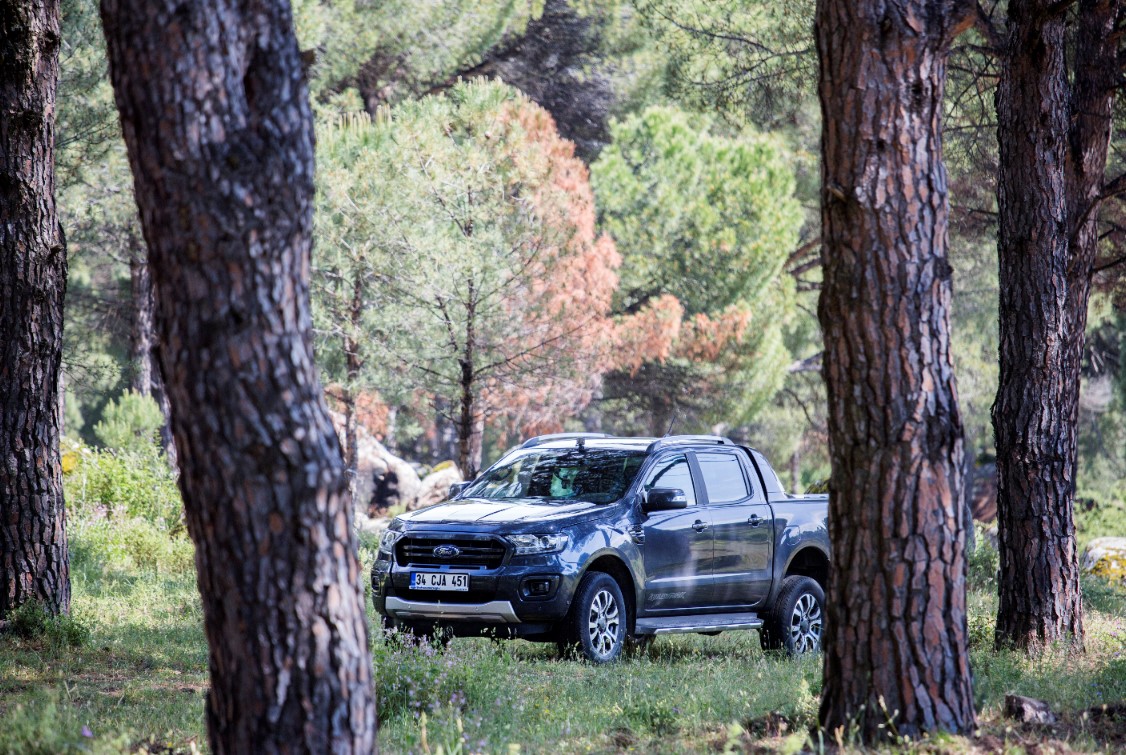
Kozak Plateau is a very extraordinary geographical region with an altitude between 500 and 1000 m above sea level. Do not confuse it with Black Sea Plateaus, I am not talking about the wide high plains. Of course, there are flat areas, but this is a dense pine forest area, actually pine nut forests... It is one of the few pine nut production regions in the world. You know that food they put in dolma and when I saw their price per kg I react by gulping "what is that!.." Kozak Plateau includes an extraordinary rocky structure, and you will see it as you wander through it. Turning left from the main road and starting to drive inwards, you will arrive at Bergama after 55 km. However, because I know the Ranger's terrain capabilities, I randomly dive in from the dirt roads I find. There is no definite goal but to explore, I find ravishing views by climbing to some places. The scent of the pine nuts is indescribable with that ball-top image. On the way to Bergama from the main road, I choose parallel roads just to extend the road and then go back to my main route a bit later. Every place is similar but everywhere is different from each other.
Pergamon
Included in the World Heritage List in the Cultural Landscape category, Pergamon (multi-layered city) consists of nine components: Cybele Sanctuary, İlyas Hill, Yığma Hill, İkili, Tavşan Hill, X Hill, A Hill, and Maltepe Tumuli. The ancient Pergamon settlement at the top of Kale Mountain, the capital of the Hellenistic Pergamon Kingdom, represents the best example of Hellenistic period city planning with its monumental architecture. The Temple of Athena, the steepest theater building of the Hellenistic period, the library, the Zeus Altar, the Dionysus Temple, the agora and gymnasium structures and the high pressure water system are the most outstanding examples of this planning system and the architecture of the period. The city, which has one of the most famous and well-known sculpture schools of the Hellenistic Period, created the Altar of Zeus, which is still considered among the wonders of the world, in the second century BC. The Altar of Zeus and many other works produced by the Bergama Sculpture School represent the culmination of the Hellenistic Period sculpture art. Bergama, the late capital of the Roman province of Asia, hosted Asclepeion, one of the most important healthcare centers of its period and marking an important stage in human history. Continuing its pioneering role in cultural and scientific life during the Roman Period, the city had become one of the few metropolises of the ancient world. The outstanding works belonging to the Roman Period such as Serapeian (Red Hall), Asclepeion, Trajan Temple, theater, amphitheater, and aqueducts are the highest-level representatives of the architecture, planning and engineering of the period. As an important part of the multi-layered cultural landscape, many monumental structures from the Roman Period still stand today. The city, which contains many exceptional examples belonging to the Hellenistic and Roman Periods together with the surrounding cultural landscape, has maintained its importance with many mosques, inns, baths and commercial centers belonging to the Ottoman period architecture, especially spread over the layers of the Roman and Eastern Roman periods. Source: Ministry of Culture and Tourism, General Directorate of Promotion, Introductory Publications
Again, I do not lay the adventurous feeling by the heel and drive Ranger into the stream bed that I have discovered by exploring, just for the escapade. We have some fun and keep going. The day is starting to turn into the beautiful light of the evening. Not much left to Bergama, we are tired, but we want to see the famous Pergamon and Asclepeion, one of the first health centers in the world, under that golden light of the evening.
The city had the title of the most important treatment center of Western Anatolia with its developed architectural layout and treatment methods.
Asclepeion
The surviving remains of the Asclepeion belong to the arrangements made by the Roman Emperor Hadrian in the 2nd century AD. The Asclepeion shows the distinction of being a sacred place even earlier than its foundation date. However, its development starts from the 4th century BC. The entrance to the sanctuary was provided by a 1 km long canopied road called Via Tecta and the last section was in the form of a column road. At the end of the road, there is the monumental entrance (propylon), the library hall to the right of the entrance, and the temple dedicated to Zeus Asclepius to the left of the entrance. After the monumental entrance, there is a large feast courtyard. The north, south and west sides of the courtyard are surrounded by columned galleries. There is a 3,500-seat theater adjacent to the northwest corner, a gallery expanded to the west in the west gallery, a large (banquet) hall in the south and latrines (toilet) in the south corner. In the southeast corner of the courtyard, there is a treatment building called the lower round building. In the western part of the large courtyard, there are holy water sources, the foundation remains of the early temple and sleeping rooms. We learn about the treatment methods applied in the Asclepeion health center from Aelius Aristides, the famous master of speech of the ancient period. Aristides was treated in Asclepeion and explained the treatment methods applied here in detail in his work named "Hieroi Logoi" ("Sacred Discourses"). In the sleeping rooms various methods such as lucid sleep, water sound, mud cure, healing water, cupping, hunger and satiety cures, therapy and music have been applied for treatment. Pergamon, one of the most important health cities of the ancient world, is also the hometown of Physician Galen, known as the father of pharmacy. Galen took care of gladiators and Roman kings here and made important determinations in the field of pharmacology. The Asclepeion sanctuary had an important place among the other contemporary treatment centers in Epidaurus and Kos in terms of the architecture and the advanced complex order of it, the treatment methods applied against diseases, the healing methods developed by Galen of Pergamon among these physicians. Source: Ministry of Culture Inventory, Ankara
I have planned a shorter route for tomorrow, so we have some time and I think we can visit again tomorrow if necessary. I am in Bergama at the end of the day. I do not know if it is due to the perception of the Asclepeion health center, but it gives me some tranquility. As I said, maybe you feel like that as soon as the golden light reflects on the pillars of the ancient city over the hills next to it.
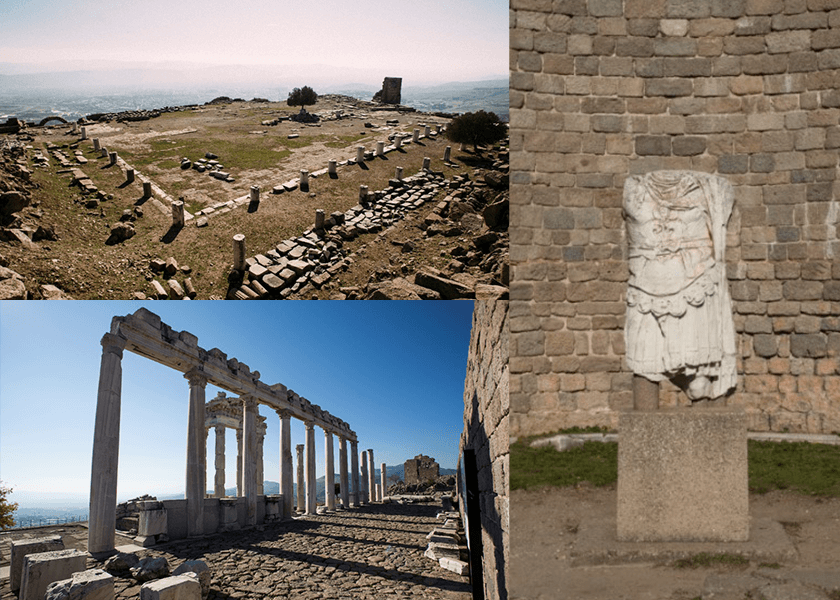
It has been a day of nearly 270 km. With the happiness of passing a delicious route to feeling the warm but cool spirit of the North Aegean, we can now eat Bergama meatballs with pleasure...
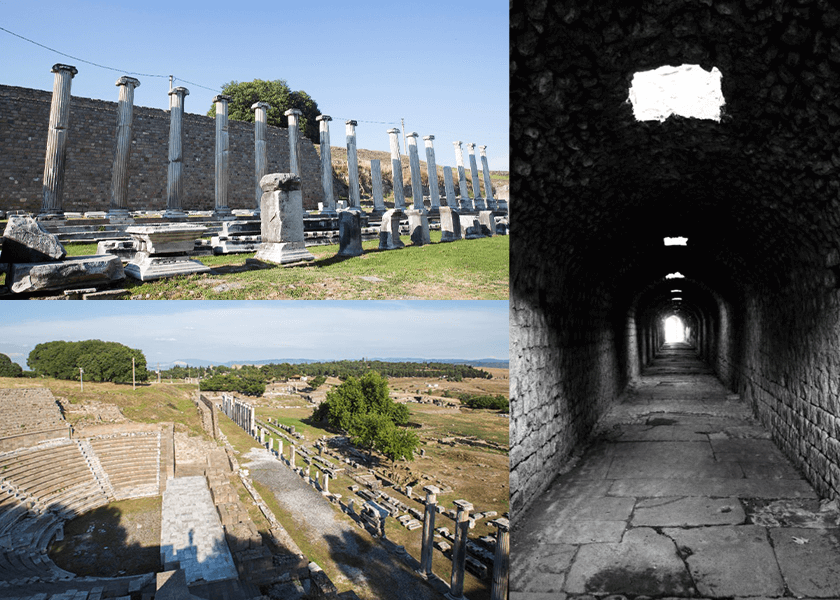
Day 2: Bergama - Kemalpaşa - Selçuk / Ephesus Ancient City
Distance: 190 km
After spending the night in Bergama, we drive to Pergamon in the morning. The ancient city overlooking the city from the hill enables some sort of morning sports by climbing it. Although not as much as Ephesus, it is a city that requires a lot of effort, if you visit you have the chance to go by cable car, and thus you can see both the city and the unique surrounding view. When you walk towards the back of the city, Kestel Dam appears as another incredibly good view. After touring the city, we get moving to go to Ephesus, Selçuk...
Ephesus
Ephesus World Heritage Site, which is included in the World Heritage List; consists of four compounds as Çukuriçi Höyük, Ayasuluk Hill (Selçuk Castle, St. John Basilica, Isa Bey Bath, Isa Bey Mosque, Artemision), Ephesus Ancient City and Virgin Mary House. Ephesus, one of the most important centers of the ancient period, has been inhabited continuously for about 9000 years from the prehistoric period to the Hellenistic, Roman, Eastern Roman, Anatolian States and Ottoman periods, and has been a very important port city and cultural and commercial center in all stages of its history. Ephesus, which contains symbols that shed light on the superior urbanization, architecture, and religious history of the Hellenistic and Roman Periods, has the most outstanding architectural and urban planning examples from different periods. Ephesus is also a unique region that is still standing today in terms of religious history, with unique works that witness the Early Christian period, such as the cult center Artemision, dated to the 8th century BC and renowned as one of the seven wonders of the Ancient period, the Church of Marry where the Ecumenical Consul of 431 was held and Mary accepted and declared as the mother of Jesus, the Basilica built on the grave of John one of the apostles of Jesus and who wrote the Gospel of John in Ephesus, the House of Virgin Mary, which is acknowledged as a place of pilgrimage by Christians today, and the Islamic structures built during the Anatolian States. Source: Ministry of Culture Inventory, Ankara
Under normal circumstances, you would leave the city and proceed towards Aliağa and reach Menemen from the coastline and go to İzmir, but as you know our principle is to discover alternative routes as much as possible. That is why I look at the low mountains that rise from the southern front of Bergama. Meanwhile, while about to stop to look at the map, I notice a biker stopping by the roadside. As I thought "Right the person I need, he should know all the roads..." and said hello, he replies "Well, I do not know much, actually the motorbike is not mine anyway! " So, I motivate myself as "wolf does his own job by himself" and keep driving.
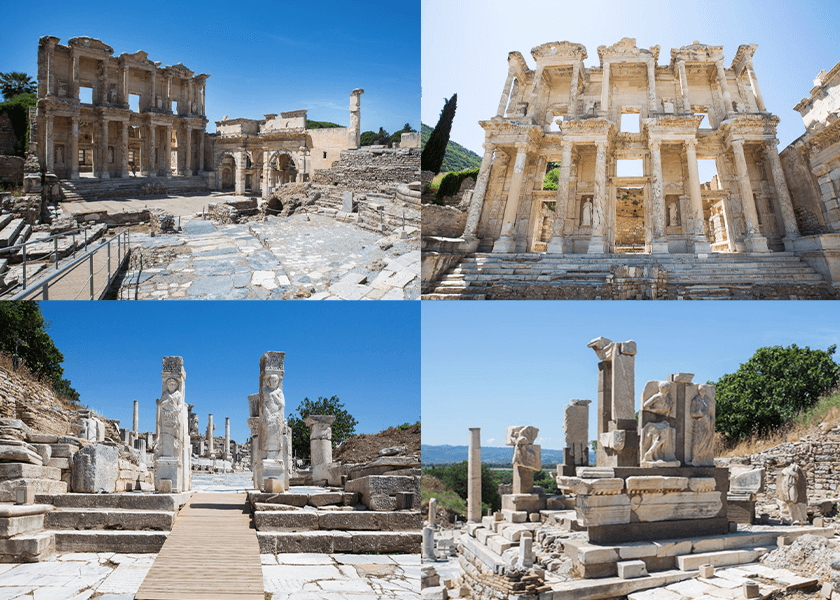
I am determined on the way I planned, the road is gradually climbing towards Armağanlar and Gaylan villages close to the city. The road starts with a very pleasant combination of asphalt and bends. As the road rises, sometimes the forest and sometimes scrub landscapes surround us, positioning the wide plain on which Bergama is established, behind us. I guess my comments of "Wow, what a wonderful road!" about these conditions during 30 km became a whammy. Suddenly that "slider" asphalt becomes dented, damaged, and some places are gravel.
I am patient for a few kilometers, but if it takes too long, it will overshadow the route setting. It is okay for Ranger as we move to crush on the surface, but you can still take this route with any type of car, so I do not want to get too long. A Transit is coming across; thanks to them, they stop for my sign and those friends tell me the road will normalize ahead soon. We thank and continue. For a while, the frequency of wind power plants that we are used to seeing draws my attention. Although the road is not as great as the initial one, it continues with a slightly patchy but quite adequate asphalt quality after 7-8 km. Again, our "off-road" vein is swelling and the hill made of clay, as if visible from the road, catches my eye. Initially the I think "it is very steep and slit, maybe there is no need to?" and this question sounds like a mild but shaking wind in my mind, but I cannot stand it and take the Ranger into the four-wheel-drive mode and push the pedal... I climb with great pleasure with ease, as is the descent.
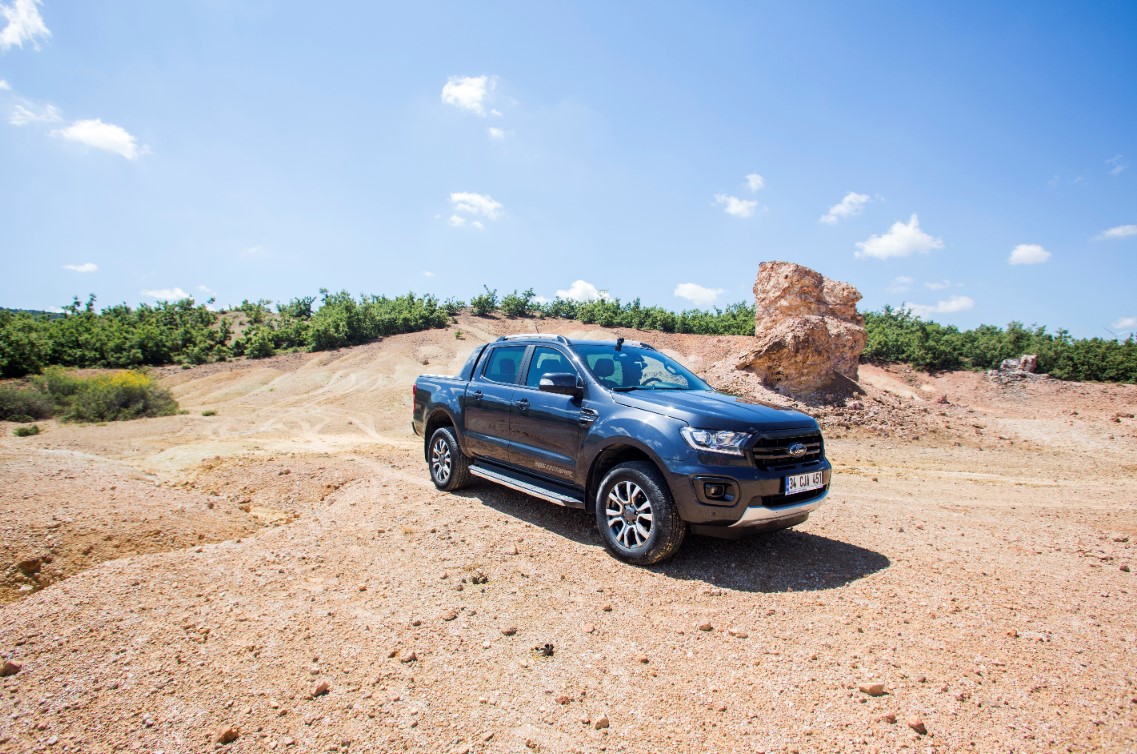
After turning back on the road and driving a total of 50 km, I arrive at Osmancalı town. A short tea break at a village coffee shop... Approximately 20-25 km later, we will be in Manisa. From here on, the road is a little wider and evolves into new asphalt. The environmental motifs are generally the same and the road is still enjoyable but promises a little tempo. I enjoyed the route from Bergama to here. Although it is a region close to the coastline, they were places I would never see if I had not planned such a route.
We arrive in Manisa, get on the ring road easily, and connect to the usual Istanbul - Izmir highway towards Izmir. I will go in the direction of İzmir and then as you know, Selçuk. But I will not use the Aydın Highway, my goal is to go to Torbalı via Kemalpaşa. As I start the descent towards Izmir, I want to turn towards Çiçekli and Yakaköy and approach Kemalpaşa from the left side, but I must go down to Bornova since I missed the turn. I go to Kemalpaşa in the usual way and this sector becomes the wrongest move of travel. I drive 25 km through the city by stop and starting, contrary to the spirit of "Road Trip". The error starts from Manisa. After that, I had to go down to Kemalpaşa over Spil Mountain. Since I had passed these places before, I did not include it in the plan with the desire to discover other ways. However, my advice is if you plan such a ride in this region, you should climb Spil and travel around 45 km with beautiful views and descend towards Kemalpaşa.

Anyway, now my destination is Torbalı, after leaving the city, I start climbing through a beautiful forest landscape. It is a double road until Selçuk, probably one of the more active parts of the route. I ride through the climbing track, which has pleasant long curves and I have enjoyed the torque of the Ranger Wildtrak's double turbo. Then we arrive at Torbalı after a brisk ride of approximately 40 km in total. After passing the city where there are partially settlements at its entrance and exit, our wheels touch to roads of Selçuk one by one after 30 km, by a double road with a better-quality asphalt and a flat road character. I am sure there are many people who have seen Ephesus Ancient City. But the date of the visit is also especially important. Do you know what is the most common answer in micro surveys I have done around me? "I visited it, but I was too small..." and answers such as that. That does not count, believe it, because I was in that group until 5 years ago, I know from there. And then this is my third visit. It is a "terribly" beautiful place (!) where the perception of time and space changes and people lose themselves.
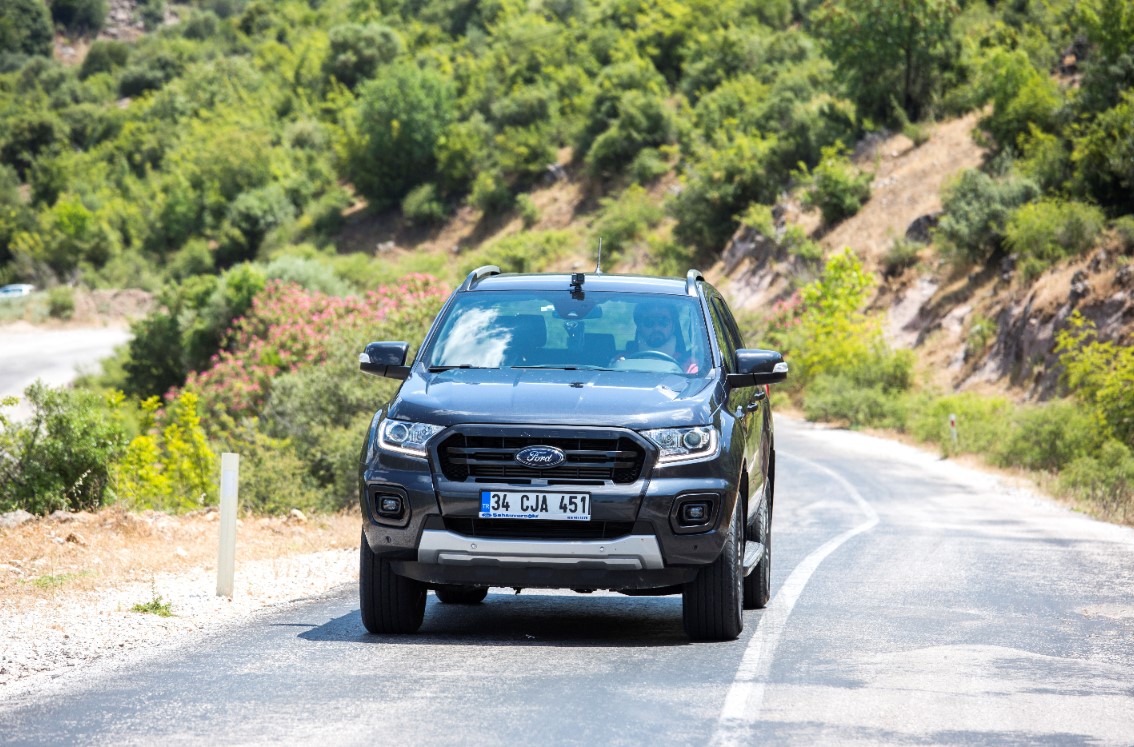
My humble advice is to visit during quiet periods such as spring and autumn. Things get hard both in terms of climate and hot weather since it is a city that requires a lot of steps. You can get into that atmosphere, even more, when there is no crowd, though this applies to every place and everything, right? The day is over, tomorrow's route is towards Inner Aegean, our goal is Denizli via Tire, Nazilli, and Tavas.
To be continued...










